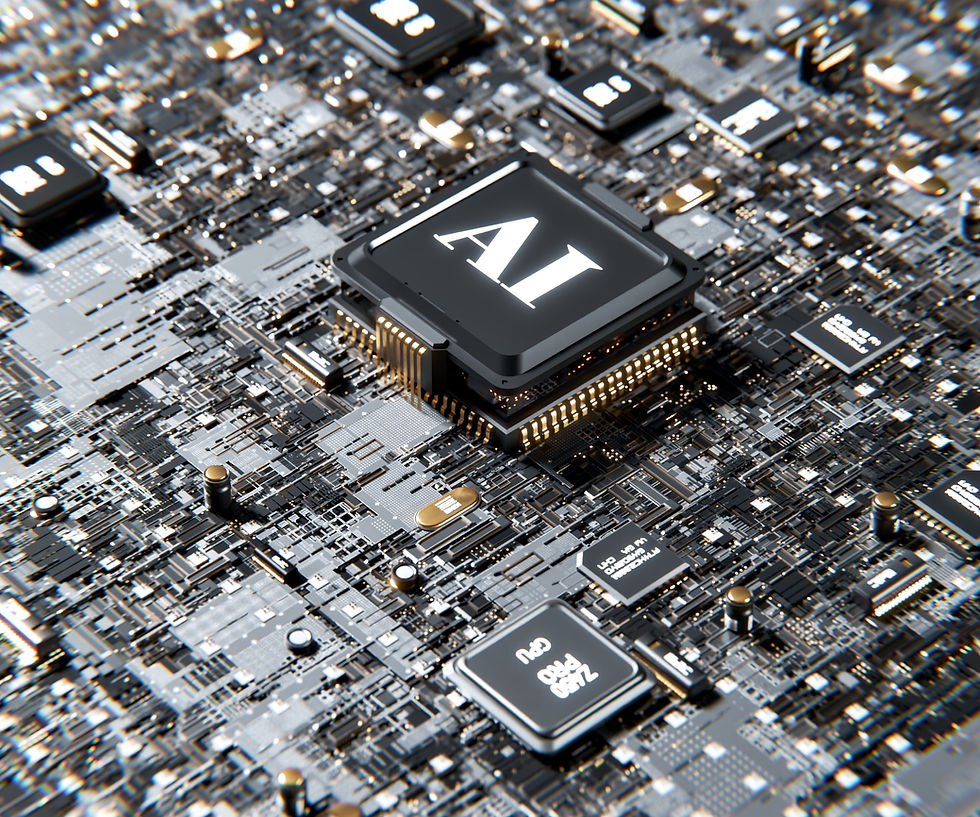From Analog to AI and Everything In Between: How Post-Production Keeps Evolving
- makdm

- Nov 5
- 4 min read
In the years since I first started in post-production, I’ve seen more industry shifts than I can count. Some have been disruptive, others transformative — but through it all, the same fundamental needs have remained: stories still need to be told, messages still need to be communicated, and content still needs to be recorded, crafted, and shared.
Each shift I’ve witnessed tells part of the story of how post-production keeps evolving — and a few moments in particular stand out.
From Traditional Design to Digital Motion Graphics

What began as traditional design and layout on paper eventually evolved into desktop publishing, then to computer-based image manipulation, motion graphics, and 3D workflows. Each step made creative work more flexible, more visual, and more accessible — paving the way for the complex, layered visuals we take for granted today.
From Film to Video (and Beyond)
As a filmgoer, I witnessed the shift from film to video firsthand — from traditional cinema with reels, film stock, and analog projectors, to file-based DLP cinema and other pristine digital projection systems.
Film stock, cameras, and the businesses that supported them were gradually replaced by digital hardware and software. The entire production and post ecosystem was reinvented — yet storytelling stayed at the center of it all.

Endless Tape Formats and the March Toward HD
Through the years, every format seemed to have its moment in the spotlight — 1-inch, 3/4-inch, 1/2-inch Beta, Beta SP, Super-VHS, Betacam SX, MII, Digital Betacam, D2, Mini-DV, Hi-8, DVCAM, HDCAM. Each one promised to be the next big thing… until the next one came along.
Then came the leap from standard definition (525-line NTSC and later DV 640x480 and 720x480/486) to high definition — 720p, 1080i, and 1080p — paving the way for higher-resolution formats like 2K and 4K used in digital cinema and UHD workflows. Each transition brought sharper images, bigger files, and new challenges for editors, producers, and engineers alike.
From Special Effects to Visual Effects

I’ve also seen the craft of visual storytelling evolve from special effects to visual effects.
Once, matte painters worked on glass; today, digital artists paint with pixels on tablets. What once required elaborate practical setups — bullet hits, explosions, and environmental effects — can now be created entirely in post using digital compositing and 3D tools. Optical printers gave way to digital compositing systems, forever changing how we build worlds on screen.
The Changing Tools of the Trade
Hardware and interfaces have evolved constantly — SCSI, RS-422, FireWire, Fiber, Triax, Thunderbolt, USB, Ethernet, and more. Editing moved from linear systems (CMX, Grass Valley, Sony 9100) to early laser-disc systems (like the CMX 6000), and eventually to professional non-linear systems like Lightworks, Avid Media Composer, Avid Symphony, Final Cut Pro, and Adobe Premiere Pro.

I remember when editing required massive, expensive “black box” systems that only a few facilities could afford. Now, editors can run an entire suite on a laptop with fast external drives, color tools, and collaborative cloud storage.
From Tape to File-Based Workflows
Perhaps one of the most impactful changes was the move from tape-based to file-based workflows. With faster card media and digital file structures, editors and producers could finally skip tape captures and real-time transfers.
That shift changed everything — speeding up turnaround times and making remote collaboration possible long before it became the norm.
Analog to Digital Everything

The analog-to-digital transformation didn’t stop at video. It extended across radio, broadcast television, photography, and cinematography. Film platters and mechanical projectors were replaced by digital playback systems. Physical media gave way to file delivery and streaming.
Even audio evolved — from splicing tape to digital workstations that let us visualize, sculpt, and perfect sound.
The Shift Toward Accessibility and Affordability
There was a time when owning a professional editing setup was out of reach for most editors. Systems cost hundreds of thousands of dollars, and access was limited to well-funded facilities.

Then came affordable digital cameras, portable decks, and software-based editing tools like Avid and Final Cut Pro. Suddenly, independent editors could set up shop from home or travel with a portable suite — a game-changer for freelancers and small post-production businesses like mine.
And Now… AI in Post-Production
Looking back over all these changes — from film to digital, analog to streaming, desktop to cloud — I can’t help but notice a familiar pattern.
Every major technological shift in post-production felt disruptive at first, but none has ever eliminated the heart of what we do. AI may be the latest disruptor, but the core mission remains: to tell stories, to communicate ideas, to connect with audiences.

I don’t see AI taking over and cranking out endless streams of uninspired content for the masses. At least, I hope that’s not where we’re headed. The human element — creativity, empathy, intuition — is still what gives stories their power.
If history has taught me anything, it’s that we’ll adapt. We’ll learn how to integrate AI tools into our post-production workflows, just as we did with every major change before. The tools will evolve, but the storytellers will remain.
(Though I’ll admit — I wouldn’t have minded if this big AI shift had waited until I was ready to retire on some tropical island somewhere! )
Closing Thoughts
The post-production industry has always thrived on change. What’s different now is the speed of innovation — but our shared commitment to storytelling, collaboration, and creativity is what keeps it grounded.
No matter how the tools evolve, those same principles will continue to define our work.
© 2025 - Mike Konstan - MAK Digital Media, Inc.
------
Additional links & resources:
SMPTE.org – professional video standards and historical context.
TVTechnology.com - The Legacy of Linear (2003)






